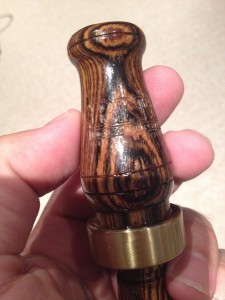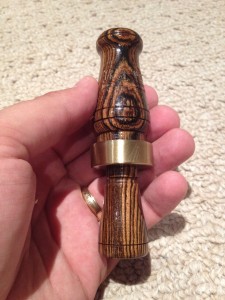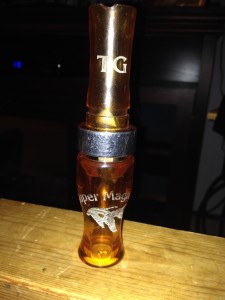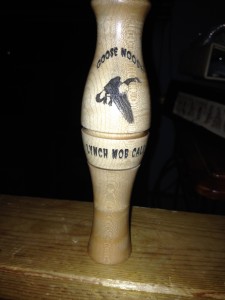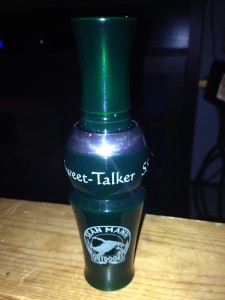I woke up on January 7th unaware that I was going to see (without hyperbole) the most unnecessary piece of hunting equipment to be marketed in my recent memory. I even managed to make it through half the day, blissfully unaware of its existence. But then during my lunch hour I scrolled through Instagram and was confronted with the Excalibur TwinStrike. I blinked my eyes, hard. Surely, I was experiencing temporary double-vision. I drew my phone closer to my eyes; maybe I needed bifocals now. Then I checked the date to make sure I had not been time-warped ahead to April Fool’s Day. But all the above were incorrect. I was looking at a legitimate picture of a twin-bolt crossbow.
My first, admittedly ineloquent, thought: “This is pretty stupid.”
As I delved deeper, I was heartened that literally hundreds of hunters were likewise confused and incredulous, in fact the vast majority of hunter feedback ranged from scathing to hilarious in their condemnation.
“The answer to a question nobody asked.”
“A chance to break two sets of recurve limbs.”
“Now I can ruin two $20 bolts instead of one.”
And so forth.
Now of course the hunting entities benefitting from Excalibur as a sponsor had excited, glowing, predictable things to say promoting this elegant monstrosity. Praise like ‘game-changer’, and ‘innovative’, and ‘revolutionary’, and ‘a new era in archery’ were being bandied about as though they were true, but it was either transparent or hypocritical or transparently hypocritical.
To anyone (it would seem) outside of those beholden to Excalibur, this should be so obviously awful that the fact this cleared the conceptualization, design, and build phases is utterly shocking.
Now as a disclaimer, writ large, I generally like Excalibur. A stable Canadian company and for a long time the makers of arguably the most reliable and simplistic crossbow interface on the market. And I guess that’s the problem. You see when you sell a solid product, how do you improve on it? The answer is you do not, or more accurately, you probably cannot. So now we have the Excalibur models of recent times. Smaller, lighter, some corners cut (google the limb reliability issues cropping up in more recent models if you’d like), more mass-produced, and ultimately formulated into a take-down model. Because that’s all you can do with an initially strong product; tweak and tinker with it. Try to convince a consumer to get ‘the latest thing’.
Thus, the TwinStrike.
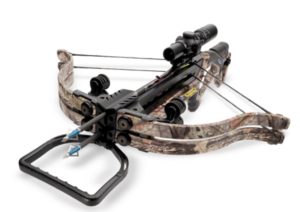
So enough about how I think we got here, let’s talk about just a few reasons why this looks to be bad for hunting.
The Slippery Slope Away from Traditional Weapons
We are not going to wade into an argument about the place of crossbows in the archery/traditional weapons/special season category because that is a fundamentally fruitless debate. What we will say is there are very contentious feelings around crossbows. For the majority of jurisdictions, they are considered archery equipment, so we’ll leave it at that. But that classification for so long has been predicated on the understanding that the interface is one arrow/bolt then the hunter has to reload the weapon. The only way this new product is innovative is that it is going to challenge that paradigm.
Now, do traditions and classifications change? As a firearm owning Canadian, I can assure you that classifications do change, but rarely to the ‘inclusive’ side of that ledger. Imagine dropping over $2k on a weapon that (I honestly hope) will not allowed for bowhunting.
Of course, a modern compound bow is also technically advanced, and hardly a traditional weapon either, but it is still one shot at a time. What would anyone think of a hunter with a compound bow if they drew back a bow string and arrow in each finger?! I have no doubt that modern muzzle-loading firearms are again nothing more than accurate single shot high-powered rifles, but still, one shot at a time. Progress is absolutely inevitable, but what amounts to a ‘double-barreled crossbow” is hardly the technical progress hunting needs.
Wounding Game
Even if I could concede ground that this mutant crossbow is still “technically” archery equipment, a much more pressing issue here is my belief (and the belief of many other hunters based on social media commentary and banter) that this will contribute to more wounded animals. I believe that as much as I believe the sun will rise tomorrow.
Now of course I can hear you stammering a riposte that the weapon is not to blame, hunters must take responsibility for ethical shots, know the capabilities of their weapon, etc, etc, etc and I agree with all that, in a vacuum. But I’ve been in situations where I have that second shot in my rifle or shotgun so that I can back up a miss, and I can tell you that in 100% of cases when I have to use that second shot, it has been more challenging than the first shot.
If the first shot you took at a deer or a turkey or a bear or whatever else you are shooting a TwinStrike at was poor, it is not unreasonable to think that the animal will likely be moving away, making the follow-up shot likely longer, likely at an alert and moving target, and likely at a range that will need to be guessed at, since the thought being able to pull out the trusty range-finder and ensuring the follow-up is true seems about as likely as me purchasing a TwinStrike. And, for that one time that you miss that first shot and the animal takes one or two steps and just stops dumbfounded, well, I’ll ask if that one scenario is worth all the others where the second shot is rushed and at indeterminate distance?
It is all a matter of risk reward when you boil it down, and if you as a serious hunter can look at me straight-faced and without a shred of doubt tell me that this gives hunters anything more than an opportunity to wound more game, that tells me a lot about your level of responsibility, braggadocio, and capacity for cognitive dissonance. Yes, I (and others) will be rightfully judging you.
Just Because You Can, Does Not Mean That You Should
All hunters make mistakes, I do it, hunters in my circle do it, hunters you know do it, and ‘professionals’ on TV and social media do it. There are all kinds of ways to screw up, but for me all fall into either errors of omission or are errors of commission. You either forget to do something and it leads to a mistake, or you actively (although I hope unintentionally) do things that lead to a mistake.
I recall being in my Hunter’s Education class with ten other candidates some decades ago, in the converted basement of a suburban home, the small space lit by the glow of an old overhead projector, listening to my instructor talk about the above two points. In this lecture, my instructors stressed with much gravity that the key difference between a gun and an arrow is that while both require practice and expertise, archery was a vocation requiring much more precision, composure, and required the elimination of as many errors of commission as possible. If I make a mistake with a shotgun slug or a high-powered rifle bullet, there is still a chance the animal will sustain hydro-static shock and trauma on even a marginal shot; an arrow wound in a marginal spot may just end up with your deer being a lame piece of coyote bait one county over. I have four other rounds in my .308 to redeem myself with, and for turkeys, two more rounds of lead pellets that wallop like a hammer. At the time, crossbows gave you one chance to get it right. You owed it to the animal then to be sure, and you still do now.
I like to file the TwinStrike under what I call errors of false security which are type of ‘commission error’. The belief that ‘there’s another round in the chamber’ (in a pseudo-metaphorical sense for this particular weapon) can actually create the circumstances for the excess wounding that I’m concerned about above.
I cannot see into hunter’s minds and souls, but as fallible humans, I can reasonably presume that someone with this weapon may take a risky shot at a quartering or moving deer, because they have that second bolt primed. A hail-Mary second bolt arcing into a rear ham or up a turkey’s cloaca. Elegant isn’t it?
Likewise, I cannot wait for the rapid-fire YouTube videos I’ll no doubt have to witness where sportsmen and amateur marksmen try to show how quickly, and in their minds accurately, that they can send two bolts downrange. Just keep building up that hubris, because I also know eventually a non-sportsman is going to post a picture or a video of a deer with two non-lethal crossbow bolts sticking out of it. And then we’ll all have some explaining to do, even if we were morally opposed to this weapon from the get-go.
Standing Up to Ridiculous Things
This ties directly to that last paragraph. We all like to have cool things, and a lot of us also like to have the newest cool things. I’ve fallen for it, but generally for harmless things like overpriced under-engineered duck, goose, deer, and turkey calls, or gimmicky ammunition that promised good things and let me down emptied my wallet faster than I could empty my gun. But this is different. This is bad for the sport, for all the reasons above and likely more if you’d care to add your opinion. I can assure you that I will never own one of these, even if given as a gift, because I believe each of us has a personal responsibility not to encourage things that negatively impact the tradition, the perception of the tradition to the non-hunting public by whom we have the privilege, and the debt of respect we owe to the wild game in making their end as prompt, clean, and precise as we humanly can.
It is dirty business, killing for your food, and the reverence for the act lies in its expedience.
I am not going to over-philosophize you here, but this weapon does not pass that test, not even a little. So, please just call it what it is, a gimmick designed to appeal in its controversy and peculiarity, and devised to increase a corporate bottom line. But as a sound and ethical means of killing game? Hardly.
Now of course, “you do you” dear reader. I’m not talking about banning or boycotting or pulling anything off the shelves. I am not some crotchety old man who hates progress; in fact, I was looking at an Excalibur Matrix on New Year’s Day as a way to extend my deer seasons. I’ve been given pause for reconsideration right now. But if this appeals to you, I’m shocked honestly that you made it this far into my missive against it. I congratulate and thank you for sticking it out through almost 2000 words of contrary opinion, the world needs more of that these days.
I am also fully aware that no one is forcing myself or anyone else to buy this terrible, terrible idea. Yes, I am also sure that there are many equally ridiculous and unnecessary things out there being marketed to hunters, and I’m likewise sure this is a business and product marketing decision equally as much as it is about really improving the state of hunting as a tradition.
After all, no reputable hunting company would mortgage out the future of hunting or the fair and ethical pursuit of game simply to make a buck, would they?

